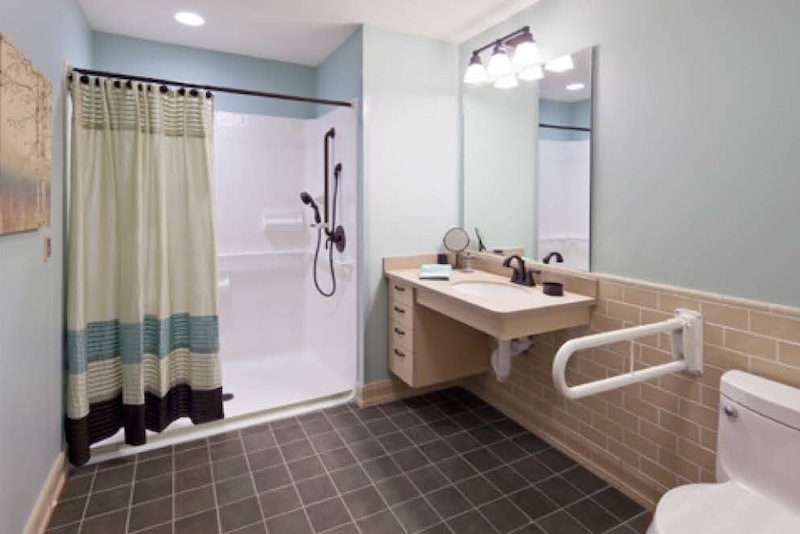Perkins Eastman Research Collaborative and the Alzheimer’s Foundation of America (AFA) are pleased to announce the publication of the white paper, “Excellence in Design: Optimal Living Space for People With Alzheimer’s Disease and Related Dementias,” an extensive report that details best design practices and other considerations concerning residential care settings for individuals living with Alzheimer’s disease.
Release of this report comes as incidence of Alzheimer’s disease is escalating nationwide. Currently, it is estimated that more than 5 million Americans are living with the brain disorder, and that number is expected to triple by mid-century. Together, Perkins Eastman and the AFA developed “Excellence in Design” with the goal of fostering a continuous dialogue within the architectural and interior design community as well as the long-term care industry about how best to design supportive and therapeutic residential settings for the dementia population.
AFA originally approached Perkins Eastman to explore the intersection of dementia care and forward-thinking senior housing design. The resulting report illustrates how experts’ evolved understanding of the disease has inspired the design of flexible facilities, with first-rate amenities and high-quality person-centered care that allow individuals to live comfortably and with dignity.
“Excellence in Design” offers step-by-step guidelines to enhance the physical environment to support a person’s remaining abilities and provide a safe, supportive, enriching, empowering, and person-centered care setting. The report also details all aspects of an environment’s impact on daily living, including active engagement and security, and provides numerous examples of facilities, both built and conceptual, where this design criteria applies.
“Everyone wants—and deserves—a supportive place he or she can call home,” says Emily Chmielewski EDAC, an Associate with Perkins Eastman and the report’s author. “Our goal in developing this report was to present a philosophy of both care and design that will help change the long-term care landscape to meet the needs of residents, their families, and professional caregivers.”
According to Carol Steinberg, AFA’s president and a key contributor to the report, “We are enormously grateful to the Perkins Eastman team for taking on this important project. Where and how people with dementia live is an essential conversation, from medical, economic, social and practical perspectives.” Steinberg continues, “In the absence of a cure for Alzheimer’s disease, care is critical. This report presents practical building blocks for improving the overall care experience both for residents and their families. The domino effect can be enormous.”
The design guidelines complement AFA’s “Excellence in Care” program, which evaluates and consults with long-term care settings to ensure that they meet the organization’s national standards of optimal care for people with dementia.
Download the free white paper at: http://www.alzfdn.org/documents/ExcellenceinDesign_Report.pdf






